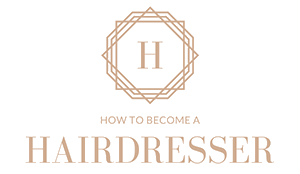To many the hairdressing salon does not immediately seem like a dangerous place, nor does hairdressing appear to be a dangerous job. However it is important to consider the common types of occupational risks common among hairdressers, in order to have a safe and happy hairdressing career.
Some of the more commonly found issues affecting hairdressers include:
Chemical Irritation
While working in the salon you are may be directly or indirectly exposed to chemicals for example colour treatments, straightening products, style products, shampoo and conditioner, continuous hand washing etc. This can cause anywhere from mild eye and skin irritations or rashes, to more serious allergic reactions. This irritation of the skin caused by repeated contact with irritants or allergens is known as contact dermatitis
The extent and severity of these reactions deepening your own sensitivity and the or how strong the product strength or concentration. Sometimes the symptoms of these irritations can go often unnoticed and but can be seen as a rash or redness and swelling of the skin on the hands.
Chemical exposure can also cause respiratory complications. You may experience pain or difficulty breathing, or other episodes. It is important to limit exposure and understand the dangers of various hair-related products from cleansers to sanitation chemicals.
Ongoing exposure to these chemicals can have even have life threating effects if symptoms are ignored or undiagnosed. Some of these conditions are common and while nuisance level, are not life-threatening. It is important to read the warnings on all labels, wear gloves where etc., and limit exposure to new or harsher products until you understand the safety implications.
Latex Sensitivity
Latex gloves are the most widely available and cost effective of all disposable gloves. They also work very well. This is why they are so common in hairdressing salons. Unfortunately many hairdressers regularly use latex gloves can develop sensitivity to latex after a period of time. Latex gloves are often lined with corn starch powder, which helps to make them easier to put on. The problem is that the corn-starch powder absorbs the Latex proteins. This causes the skin to become irritated, and over time can lead to an allergic reaction. When the gloves are removed the powder can be released into the air sometimes inhaled.
Prolonged us of Latex gloves can lead to dry, raw skin, sustained dermatitis with blisters and even respiratory symptoms.
Low allergen, powder free gloves are available and are worth the investment to reduce the chance of a reaction to latex.
Repetitive Strain Injury (RSI)
Repetitive Strain Injury (RSI) is defined as “injury to the musculoskeletal and nervous systems that may be caused by repetitive tasks, forceful exertions, vibrations, mechanical compression, or sustained or awkward positions.”
As a hairdresser, you may experience times where your tendons can become irritated and inflamed by awkward postures or repetitive hand movements.
A good example of RSI among hairdressers is carpal tunnel syndrome, a painful disorder of the hand caused by pressure on nerves that run through the wrist. Symptoms include numbness, pins and needles, and pain.
If any of the symptoms above are observed or you or, it is important to take a break and perform an ergonomic assessment of you the way you work. It may be an early warning of something more painful and serious.
Burns and Shocks
Hair is primarily made up of Keratin, a fibrous protein that forms both the structure of hair and protects it from stress. Keratin is held together by hydrogen bonds, that if broken or weakened, will allow the hair to be rearranged. This can be done by applying water, however works best with heat. Once cooled the hair will remain in that position.
This is the theory behind the techniques hairdressers use to straighten and curl hair. It is also the reason why hairdressers are required to use electrical appliances, such as hair dryers and curling tongs, even in seemingly dangerous work areas where water may be present.
According to GHD Australia the optimal temperature for styling hair is 185oC. Anything lower will require too many passes to achieve the style, drying out the hair. Think about it, this is just a few degrees hotter than the average heated oven and poses a high burn risk to both hairdressers and clients. Burns from straighteners and curlers are very common price to pay for well styled hair.
Blow dryers and other electrical tools can cause shocks and electrocution if not used properly. They can also cause injuries if they are damaged and not repaired in a timely manner. Always check for frayed cords and other signs that electrical appliances are unsafe. Hairdressers should also avoid getting electrical appliances wet, as this increases the risk of electrocution.
Fatigue
Hairdressing roles usually involve being on your feet for up to eight hours a day and this can take its toll on your body and wellbeing. But there are some things you and your employer can do to combat this.
When the task permits use an adjustable or agronomical stool or chair to sit on. Perhaps the chair your client is sitting on is adjustable, ensure you take the time to adjust it so that you can comfortably reach your client without leaning over, twisting or straining yourself in any way.
Although a lot of women love to wear fashionable heeled shoes, in reality they are not that practical for a role like this when you are on your feet all day. Be kind to your feet and invest in a pair of low heeled comfortable shoes.
Ensure you take allocated breaks and lunch hours, you may want o work through to get the job done but these breaks are important for your mental and physical wellbeing. Also vary your tasks, doing the same task repetitively can cause strain on your body so break it up with other small tasks in between.
Poor Ventilation
Poor ventilation poses a big threat to the safety risk to hairdressers. Adequate ventilation is required to control fumes and odours from chemical substances used in the salon. A good ventilation system can be as simple as open windows or, combination air conditioning system and extraction fans. Ventilation is also useful for controlling the salon temperature to create a more comfortable working environment. A good example of this is the prolonged use of hair dryers and other heating equipment will generate heat in the work area, causing discomfort to both hairdressers and their clients.
Cuts
Hairdressing scissors are purpose built precision instruments. They are sharp and effective and spend more hours in the hands of a hairdresser than any other tool. This puts hairdressers at a high risk for cuts and puncture wounds. The most important thing is to be aware of this danger at all times when in the salon. Ensure that when carrying sharp objects such as scissors, they are carried with the appropriate care and where possible the sharp end should be pointed toward the ground. This will greatly reduce the risk of cuts and punctures if the person carrying a sharp object should fall or bump into another person.
Infections
A far cry from the fashion and glamour that usually surrounds hairdressers is the reality of undesirable transmission of infections from clients. As a hairdresser you will be in situations that require contact with the skin, scalp and hair of many different clients.
Failure to understand the risk lead to increased exposure various infections of the skin and hair. These kinds of infections can be fungal, viral or bacterial, all of which are very common and easily transmitted when awareness in a salon is low.
Most of the time these fungal and bacterial infections can be visible on the client, however if you are not able to recognise the symptoms or are to relaxed when it comes to safety protocols, you are at risk of being exposing yourself and others to the infection as well. It is extremely important to ensure all tools improperly cleaned and sanitized to prevent any outbreaks within the salon from occurring.
Viral infections are not be visible in many cases and be extremely serious. Examples of virus infections include herpes, Hepatitis C and even HIV. It may be a good idea to visit your doctor about for advice on any precautionary vaccinations available.
If you are concerned or worried in any way it is important to ask your clients upfront about infections or illnesses they may have. Don’t be afraid to seem forward or worry about creating an awkward situation. It is always better to be safe than sorry, especially when you are putting yourself at risk.
As always you must always make sure all tools are sterilised. Politely and gently remind others in the salon if you observe any potential risks. Even the most seasoned and talented hair professionals can become complacent. If it comes from a place of genuine concern for their wellbeing, you will not get any argument regarding this.
If there is ever an incident where broken skin is involved, your first priority is to ensure you are safe and clear from any risk. If it can affect others in the salon, advise that person right ways to be extremely cautious. Next sterilise all tools. Do not take any chances, regardless of what you think you know about the situation.
Allergies
As per the previously described many of the products used in a salon can cause an allergic reaction. Many products used in hairdressing are strong and can be dangerous if used incorrectly so ensure you read the directions and guidelines on each products and adhere to the instructions, if the products advises that you wear gloves to apply, then ensure you follow this protocol and wear the gloves. A person who is particularly sensitive can have a reaction that can lead to external as well as internal problems such as breathing difficulties and other respiratory distress.
Trip and Slip Hazards
Most salon tend to have a smooth slick finish on the floor, usually for durability and aesthetics reasons but add a days’ worth of cut hair and spray in products and you could have yourself a nasty accident. Combat this by ensuring that the floor is swept at every opportunity and definitely between each client. Also wearing sensible non slip shoes is a must to avoid a mishap.
Stay safe and ensure you:
- Never use a damaged appliance or one that has impaired cords and never attempt to use a broken power point
- Always keep electrical cords elevated and off of the floor
- Switch your appliance off at the wall before you pull out the plug
- Don’t piggy back appliances by using multiple appliances on one power point
- Always disconnect broken appliances immediately and report them so no one else accidently uses them



